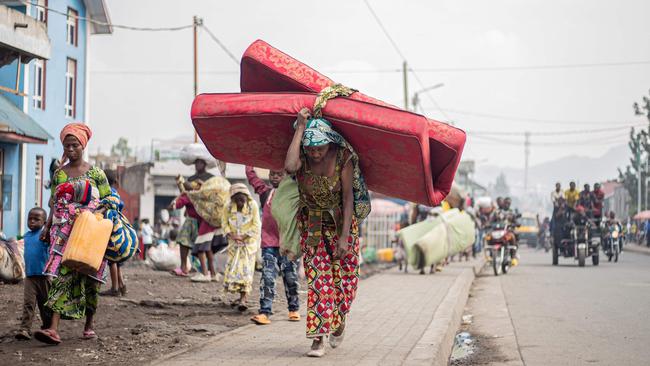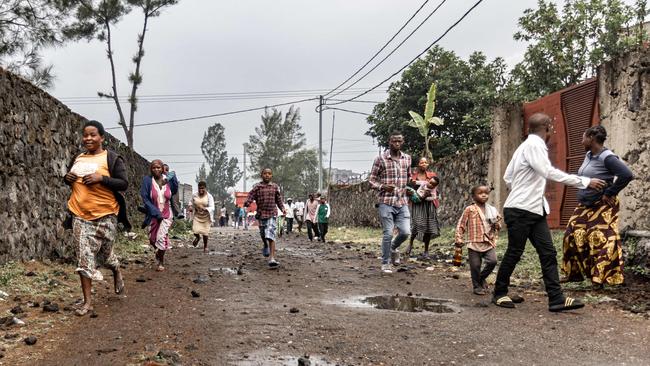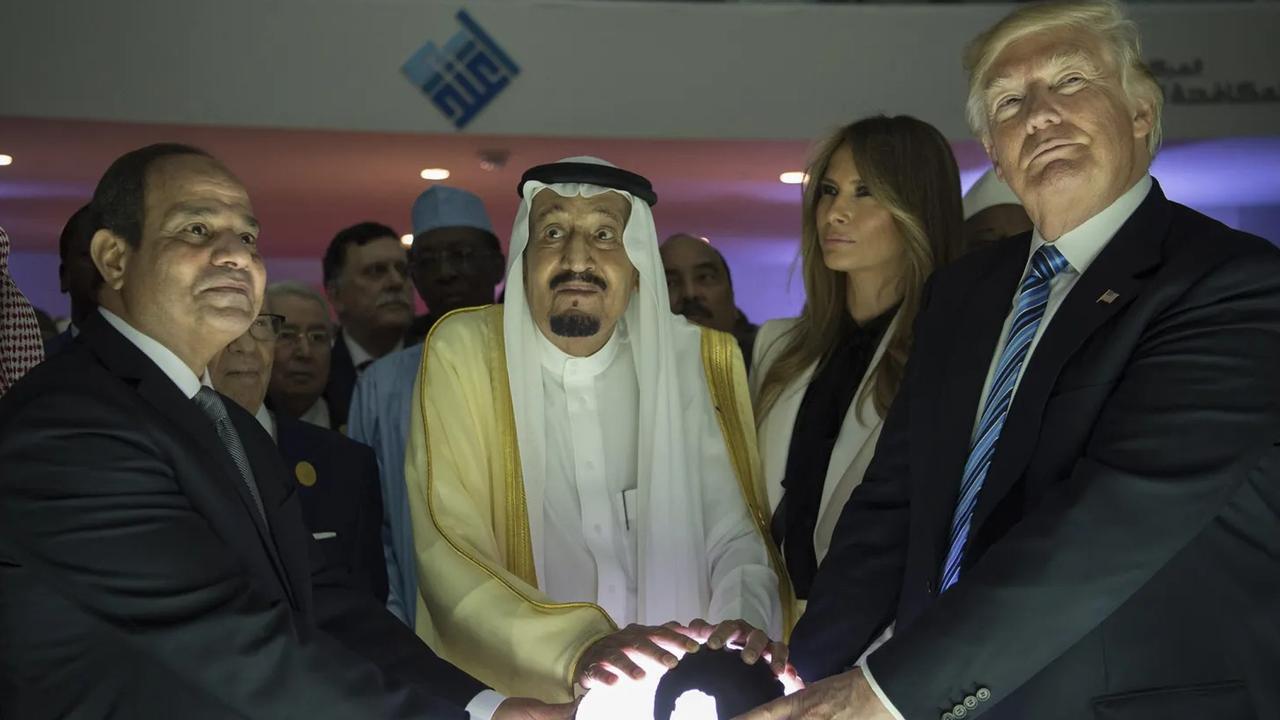Chaos in Democratic Republic of Congo driven by mineral riches
The source of misery for the people of the eastern DRC lies in the vast natural treasures beneath their feet: rich metals.

The source of misery for the people of the eastern Democratic Republic of Congo lies in the vast natural treasures beneath their feet.
Diamonds are found there, gold too, but the most coveted riches are lesser-known ones: coltan, wolfram, cassiterite and a dizzying array of other metal salts.
These minerals, crucial in the production of laptops and smartphones, have for decades turned the province of North Kivu into a honeypot for smugglers.
The term “blood diamonds” caught on to help bring an end to conflicts in other parts of Africa, but the similarly murderous hunt for smart-tech minerals has only intensified in the DRC, displacing more than six million people and condemning a region to perpetual chaos.
On Monday, after weeks of escalating violence, rebels backed by neighbouring Rwanda claimed to have taken control of one of the DRC’s key eastern cities, Goma.
The two countries are on the precipice of a far worse conflict.
The M23 rebels seized the local branch of the state broadcaster and videos showed looting at the airport and a mass jailbreak from Goma prison.
Analysts are concerned about the risk of a full-blown war that could suck nearby countries in, as happened in 1998.
It is estimated that more than three million people were killed in the five years that followed.
The science of extraction can be complicated, but the economics are straightforward. Elements that power laptops and smartphones are found in large quantities in the east of the DRC. It is no coincidence that violence and insecurity have grown there as the clean energy and tech revolutions have taken off.
Since 2000, a UN group of experts has reported regularly on the violence, consistently implicating Rwanda, with which the DRC shares a 225km border, as a driving force of the conflict.
The language of the panels’ early reports was couched in references to shadowy foreign influences with ambitions to secure mineral assets. The language strengthened over time and the panel presented evidence that Uganda and Rwanda were fomenting armed rebellion in North Kivu to pillage and protect smuggling routes.

It reported on the Rwandan government’s own figures on gold exports to global supply chains, highlighting that the tiny landlocked state exported vastly more than it mined.
The 2008 panel report led in large part to Sweden, Canada and The Netherlands stopping aid to Rwanda, which relies on overseas support.
Britain and other Western powers were less squeamish, continuing to present Rwanda as a model of development since the genocide of 1994, and its autocratic leader, Paul Kagame, as an international inspiration.
The panel’s most recent report is the most damning, accusing Rwanda of backing the M23 rebel group to win control of several of the most valuable mines. The objective was long-term occupation of North Kivu, and Rwanda provided heavy weapons.
At least 3000 to 4000 Rwandan troops are deployed in the east of the DRC, the experts said, and every M23 unit is supervised and supported by Rwandan special forces.
Trafficking from the area, known as the African Great Lakes, constituted “the largest contamination of mineral supply chains” in the region, the report said.
Rwanda produces its own coltan, from which tantalum – crucial in making electronics – is extracted.
The US Geological Survey’s latest figures show that, in 2023, DRC and Rwanda produced 1500 tonnes of tantalum, 63 per cent of global production.
The challenge is to prove how much of it comes from legitimate mines in Rwanda, and how much from conflict-ridden mining in the DRC.
There is growing scrutiny of technology companies’ global supply chains as demand for rare-earth minerals helps to fuel violence and exploitation.
This question of “source separation” will dominate proceedings if a legal case between the Kinshasa government and the tech giant Apple ever goes to court.
The Times



To join the conversation, please log in. Don't have an account? Register
Join the conversation, you are commenting as Logout